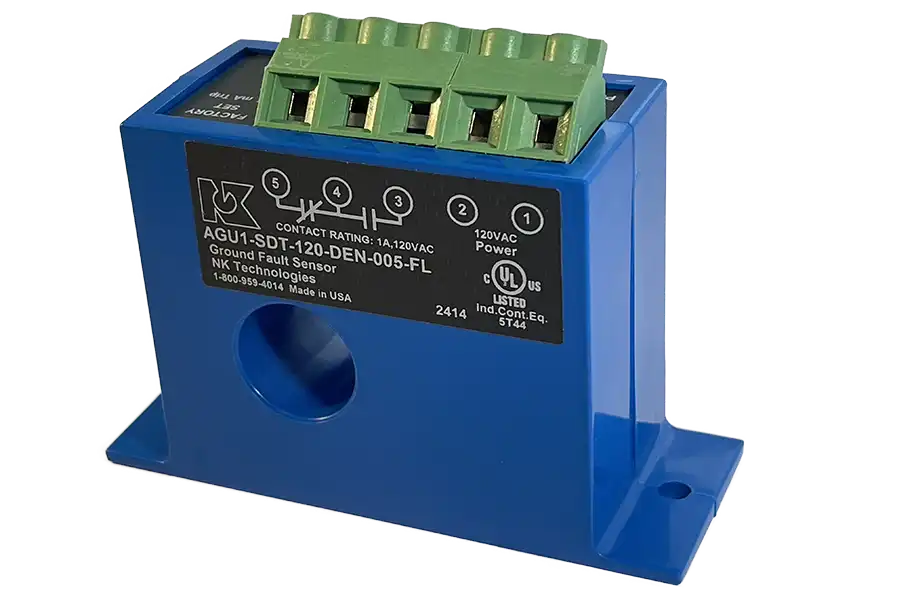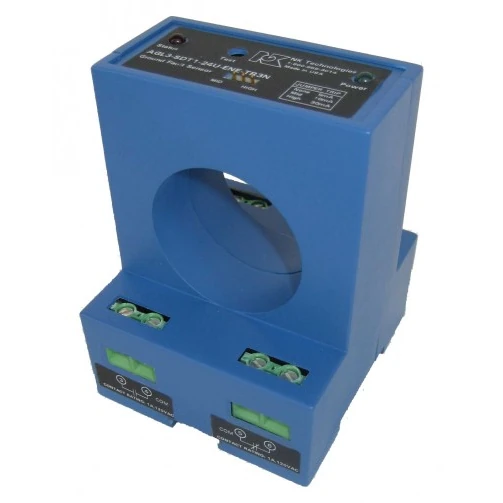Two base models are offered:
Choosing the correct AC ground fault relay is based on whether all current carrying conductors will fit through the relay’s aperture window. Configuring the ground fault relay order code is dependent upon the circuit-interrupter type. The Ground Fault Relay Selection Guide provides a table for most common field configurations and also includes shunt trip breaker models from various vendors. To use the Ground Fault Relay Guide table the following details are needed:
Branch circuit specifications: (example: 50A, 208 VAC, 3-Phase, Delta (3+1))
A. Amperage capacity (30A, 40A, 50A, 60A, 80A, 90A, or 100A)
Defines the required wire gaugeB. Load configuration (Single Phase, 3-Phase Delta (3+1) or 3-Phase Wye (4+1))
Defines the number of wires that must run through the apertureCircuit-Interrupter type:
A. Shunt trip breaker (recommended)
B. Contactor
C. Relay
Note: For commercial kitchens, a shunt trip breaker is the most common method for interrupting the branch circuit when a ground fault is detected by the ground fault relay.
Depending on the required aperture size either the AGU or the AGL Series is recommended for commercial kitchens and other wet locations per 2020 & 2023 Edition National Electric Code (NEC) 210.8 (B) through (F)), and 422.5 special appliances. The best relay for a given branch circuit is dependent upon whether the required wire bundle passes through the aperture of the ground fault relay.
Check out our new easy to use guide for Choosing a Ground Fault Relay in Four Easy Steps. The guide walks you through the decision making process of choosing the correct relay for your application.
A more detailed guide is also provided. The Ground Fault Relay Selection Guide is provided to ease the selection process and recommendations are based on using a shunt trip breaker and THHN wire. Given numerous wire and local code variants, the Guide is for reference only.
When using other than THHN wire and/or non-NEC cable correction factors, use application note How to Calculate Bundle Diameter to confirm whether the required wire bundle will pass through aperture of either the AGU or AGL ground fault relay.
After verifying that all current carrying conductors pass through the relay’s aperture, Click here for How to Wire a Shunt Trip Connection.
Resources & Downloads
Contact Us for Assistance
"*" indicates required fields
Here is what Engineers have to say about our technical expertise...
“Changes to NEC 210.8 B-F have challenged all of us in the industry to find new GFCI solutions. When NK Technologies reached out to us recently, we decided to invest a few hours into meeting with their application experts. Five of our electrical engineering designers attended the session and considered it time well spent. NK Technologies has an in-depth understanding of the new NEC requirements and ground fault products designed to meet them. We are thankful for their time.”
PK Electrical
One of the top electrical and low voltage/communications design firms,
in both the private and public sectors, based in Reno, NV and Denver, CO.


